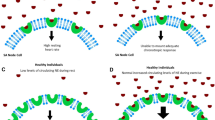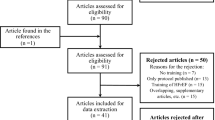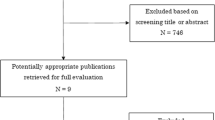Abstract
Chronotropic incompetence (CI) is an inability to adequately raise heart rate during physiological stress. We established CI prevalence and exercise capacity in heart failure versus healthy age-matched controls. We conducted a systematic search (1966–July 1, 2020) and meta-analysis of studies reporting peak VO2 in people with heart failure with reduced (HFrEF) and preserved (HFpEF) left ventricular ejection fraction and controls. Seventeen studies of 4410 participants were included, 4167 with heart failure and 243 age-matched controls. In both heart failure phenotypes, CI was more prevalent in HFrEF (51.7%) and HFpEF (55.8%) than in healthy controls (9%). Mortality was 24% higher in people with HFrEF and CI versus those with HFrEF and without CI; OR −1.24 (95% CI −2.20 to −0.28; p = 0.01). People with heart failure and CI had lower peak VO2 than those without CI (MD) −3.30 ml kg−1 min−1 (95% CI −4.25 to −2.35, p < 0.01), and this was primarily driven by the HFrEF sub-population (MD) −3.86 ml kg−1 min−1 (95% CI −4.83 to −2.89, p < 0.01). Maximum heart rate MD −37.51 beats min−1 (95% CI −41.99 to −33.03, p < 0.01) and maximum-resting heart rate were lower MD −29.44 beats min−1 (95% CI −34.55 to −24.33, p < 0.01) in people with heart failure with CI vs without CI. People with heart failure and CI demonstrated similar respiratory exchange ratios (RER) to people with heart failure but without CI; (MD) −0.02 (95% CI −0.03 to −0.01), p < 0.01, suggesting that poor effort was unlikely to explain CI. CI is more prevalent in heart failure than in age-matched controls and although it is associated with lower peak VO2 in HFrEF, it is unrelated to the lower peak VO2 in HFpEF. RER values suggest poor effort is unlikely to explain these findings.








Similar content being viewed by others
References
Brubaker PH, Kitzman DW (2011) Chronotropic incompetence: causes, consequences, and management. Circulation 123(9):1010–1020
Keteyian SJ et al (2016) Variables measured during cardiopulmonary exercise testing as predictors of mortality in chronic systolic heart failure. J Am Coll Cardiol 67(7):780–789
Smart N et al (2005) Determinants of functional capacity in patients with chronic heart failure: role of filling pressure and systolic and diastolic function. Am Heart J 149(1):152–158
Smart NA et al (2012) Exercise training in heart failure with preserved systolic function: a randomized controlled trial of the effects on cardiac function and functional capacity. Congest Heart Fail (Greenwich, Conn) 18(6):295–301
Loftin M et al (2004) Comparison of VO2 peak during treadmill and cycle ergometry in severely overweight youth. J Sports Sci Med 3(4):554–560
Cohen-Solal A et al (1999) Cardiac and peripheral responses to exercise in patients with chronic heart failure. Eur Heart J 20(13):931–945
Higgins JPT, TS, Deeks JJ, Altman DG (2003) Measuring inconsistency in meta-analysis. Br Med J 327(7414):557–60
Huedo-Medina TB et al (2006) Assessing heterogeneity in meta-analysis: Q statistic or I2 index? Psychol Methods 11(2):193–206
Egger M et al (1997) Bias in meta-analysis detected by a simple, graphical test. BMJ 315(7109):629–634
Sterne JA, Gavaghan D, Egger M (2000) Publication and related bias in meta-analysis: power of statistical tests and prevalence in the literature. J Clin Epidemiol 53(11):1119–1129
Wells G, BS, O'Connell D, Peterson J, Welch V, Losos L, Tugwell P (2019) The Newcastle-Ottawa Scale (NOS) for assessing the quality of nonrandomised studies in meta-analyses. [cited 21 July 2020]; Available from: http://www.ohri.ca/programs/clinical_epidemiology/oxford.asp
Brubaker PH et al (2006) Chronotropic incompetence and its contribution to exercise intolerance in older heart failure patients. J Cardiopulm Rehabil 26(2):86–89
Clark AL, Coats AJ (1995) Chronotropic incompetence in chronic heart failure. Int J Cardiol 49(3):225–231
Fei L et al (1996) Decreased heart rate variability in patients with congestive heart failure and chronotropic incompetence. Pacing Clin Electrophysiol 19(4 Pt 1):477–483
Hajdusek P et al (2017) Heart rate response to exercise in heart failure patients: the prognostic role of metabolic-chronotropic relation and heart rate recovery. Int J Cardiol 228:588–593
Jamil HA et al (2016) Chronotropic incompetence does not limit exercise capacity in chronic heart failure. J Am Coll Cardiol 67(16):1885–1896
Jorde UP et al (2008) Chronotropic incompetence, beta-blockers, and functional capacity in advanced congestive heart failure: time to pace? Eur J Heart Fail 10(1):96–101
Klein DA et al (2015) Association of chronic kidney disease with chronotropic incompetence in heart failure with preserved ejection fraction. Am J Cardiol 116(7):1093–1100
Magri D et al (2012) Chronotropic incompentence and functional capacity in chronic heart failure: no role of beta-blockers and beta-blocker dose. Cardiovasc Ther 30(2):100–108
Magri D et al (2014) Cardiovascular mortality and chronotropic incompetence in systolic heart failure: the importance of a reappraisal of current cut-off criteria. Eur J Heart Fail 16(2):201–209
Al-Najjar Y, Witte KK, Clark AL (2012) Chronotropic incompetence and survival in chronic heart failure. Int J Cardiol 157(1):48–52
Patel HC et al (2020) The prognostic significance of chronotropic incompetence in patients with severe left ventricular systolic function referred for cardiac transplant assessment. Eur J Prev Cardiol 27(3):328–330
Roche F et al (2001) Chronotropic incompetence response to exercise in congestive heart failure, relationship with the cardiac autonomic status. Clin Physiol 21(3):335–342
Santos M et al (2018) Resting heart rate and chronotropic response to exercise: prognostic implications in heart failure across the left ventricular ejection fraction spectrum. J Card Fail 24(11):753–762
Sarma S et al (2020) Mechanisms of chronotropic incompetence in heart failure with preserved ejection fraction. Circ Heart Fail 13(3):e006331
Smart NA et al (2012b) Exercise training in heart failure with preserved systolic function: a randomized controlled trial of the effects on cardiac function and functional capacity. Congest Heart Fail 18(6):295–301
Witte KK, Cleland JG, Clark AL (2006) Chronic heart failure, chronotropic incompetence, and the effects of beta blockade. Heart 92(4):481–486
Mancini D, LeJemtel T, Aaronson K (2000) Peak VO(2): a simple yet enduring standard. Circulation 101(10):1080–1082
Sarullo FM et al (2010) Cardiopulmonary exercise testing in patients with chronic heart failure: prognostic comparison from peak VO2 and VE/VCO2 slope. Open Cardiovasc Med J 4:127–134
Butler J et al (2004) Selection of patients for heart transplantation in the current era of heart failure therapy. J Am Coll Cardiol 43(5):787–793
Hill AB (1965) The environment and disease: association or causation? Proc R Soc Med 58:295–300
Tse HF et al (2005) The incremental benefit of rate-adaptive pacing on exercise performance during cardiac resynchronization therapy. J Am Coll Cardiol 46(12):2292–2297
Mehra MR et al (2006) Listing criteria for heart transplantation: International Society for Heart and Lung Transplantation guidelines for the care of cardiac transplant candidates–2006. J Heart Lung Transplant 25(9):1024–1042
Smart N et al (2007) Exercise training in systolic and diastolic dysfunction: effects on cardiac function, functional capacity, and quality of life. Am Heart J 153(4):530–536
Zweerink A et al (2018) Chronotropic incompetence in chronic heart failure. Circ Heart Fail 11(8):e004969
Gierula J et al (2020) Personalized rate-response programming improves exercise tolerance after 6 months in people with cardiac implantable electronic devices and heart failure: a phase II study. Circulation 141(21):1693–1703
Smart NA et al (2010) The effects of exercise training on systemic brain natriuretic peptide (BNP) and N-terminal BNP expression in heart failure patients: an individual patient meta-analysis. Circulation 122(21)
Author information
Authors and Affiliations
Corresponding author
Ethics declarations
Conflict of interest
Hannah Clark is currently receiving an Australian Government Research Training Program (RTP) Scholarship for Doctoral Candidature. Peter Brubaker receives financial support as a consultant from Merck, Corvia Medical, and Boehringer Ingelheim. John Gierula is currently receiving National Institute for Health Research (UK), Post-Doctoral Fellowship award (Does not relate to this work).
Additional information
Publisher’s Note
Springer Nature remains neutral with regard to jurisdictional claims in published maps and institutional affiliations.
Supplementary Information
Below is the link to the electronic supplementary material.
Rights and permissions
About this article
Cite this article
NA, S., H, C., P, B. et al. Effects of chronotropic incompetence on exercise capacity in people with heart failure versus age-matched controls. Heart Fail Rev 27, 795–809 (2022). https://doi.org/10.1007/s10741-021-10081-1
Accepted:
Published:
Issue Date:
DOI: https://doi.org/10.1007/s10741-021-10081-1




